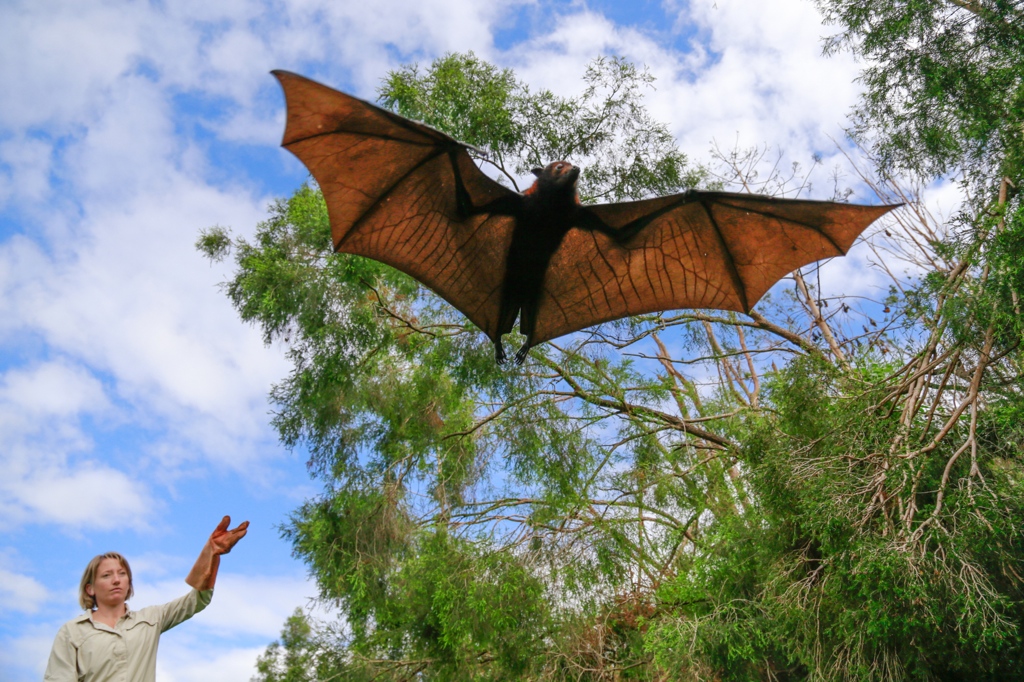More flying foxes are colonising urban areas, leading to a cascade of negative events, including poor health of bats, nuisance to human communities and Hendra virus spillover to horses.
An international team of researchers has been awarded a $2.1 million US National Science Foundation grant to study how humans are contributing to emerging infectious diseases passing from animals to people.
Their research focuses on Hendra virus and flying fox ecology in Australia as a model system for other bat-borne viruses in other parts of the world.
The NSF grant will allow the team, involving researchers from three continents, 10 academic institutions and a non-profit organisation, to study how environmental change is affecting human-wildlife interactions and the spread of diseases.
They aim to identify the underlying causes of flying fox urbanisation and commence a long-term habitat restoration project to reverse some of these trends.
The Griffith University team, led by Dr Alison Peel and involving Professor Hamish McCallum and PhD student Tamika Lunn, is leading the field components of the research.
“Changes in climate and deforestation of winter habitat of flying foxes, creates periodic food shortages for the bats. In search of more reliable food sources, they often end up roosting in towns and cities,” said Dr Peel, a veterinary disease ecologist.
“Many people think flying foxes are increasing in numbers, but they are not — it’s just that instead of being out in the bush, flying foxes are now living near our houses and feeding on trees in our gardens and weeds in urban and peri-urban land.”
Problems can arise if flying foxes roosting in urban areas feed on land that horses have access to as they may excrete Hendra virus in their urine.
Hendra virus can cause death in horses within days to weeks of initial contact, and bring about flu-like or neurological symptoms in humans that are often fatal. The Hendra virus vaccine for horses is highly effective, yet it’s not being widely used.
“No one wants their horse to die a painful and distressing death, but many horse owners don’t vaccinate as they are unaware of the risk that Hendra virus poses to their horses” said Peel.
“Political and social scientists involved in the study will develop ways to improve communication of scientific information, such as information on vaccination, to people at risk of disease spillover.”
The team’s approach is to understand and address Hendra virus spillovers in Australia using a “one-health” philosophy.
“One-health looks at simultaneous winning situations.” said Raina Plowright, the principal investigator of the project, an Australian based at Montana State University in the USA.
“In this case, potential solutions benefit the health of the forests, the health of the bats, the health of livestock and the health of humans.
“This whole cascade of events could potentially be solved if we can restore their winter habitat and draw the bats out of the cities.”
University of New South Wales bat ecologist, Dr Peggy Eby says, “We know that rich pulses of eucalypt flowering attract urban bats out of cities into native forests, and we are working with stakeholders, private landowners and communities to embed restoration of critical winter flowering species into existing programs of habitat regeneration and restoration.”
This will have the added benefit of restoring a vital ecological function of the bats.
“Flying foxes spread pollen and seeds from native trees over much greater distances than birds and insects, connecting fragmented forest patches,” Dr Eby says.
“The animals that feed in urban areas aren’t performing this vital function and we need to try and reverse this.”
The research may also lead to larger, more comprehensive solutions applicable far beyond Australia’s eastern coast.
“We’re seeing the emergence of more and more infectious diseases from bats, such as SARS and Ebola, but they are emerging in countries in Africa and Asia where it is difficult to do detailed multidisciplinary studies” Plowright says.
“If we could identify the underlying environmental drivers, as we are trying to do for the flying foxes in Australia, we can potentially reverse and eventually prevent outbreaks by getting to the root cause of this public health problem.”
